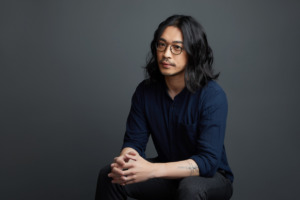This website uses cookies so that we can provide you with the best user experience possible. Cookie information is stored in your browser and performs functions such as recognising you when you return to our website and helping our team to understand which sections of the website you find most interesting and useful.
Interview with Li Yu Cheng, who is a designer of the prestigious Studio X4. He discusses the advantages and challenges of being a designer in Taiwan, as well as his journey toward being a successful designer.
Why did you choose to pursue a career as an architect/designer? When did you realize you wanted to pursue this as a career?
Back in my childhood, I was rewarded with a lot of gundam toys from my parents, as most of the time they were busy with their own career. Spending a long time playing with gundam became my first impression of building something, and made me feel I’m empowered to achieve something.
How does it make you feel to win this award?
It is truly an honor to me and my team. Design is a progression of self-finding, it is always a pleasure that projects have been seen.
What do you feel makes your work stand out, that drew the judges’ attention to it?
As previously mentioned, design is a progression of self-finding, it should be a path of talking to self. Reflecting thoughts out of mind, and trying to combine them with reality, or solving problems by trying different ways. I think in the project-Self-Revealing, my thoughts come across with the judges’, and I am grateful that happened.
How did the idea behind your winning project come about?
This is a meditation field, at the first meeting with my client, we talked about some philosophy perspectives. That was a good time. Then we came to the conclusion that peace comes from the inner side of self, and self can only be seen by interaction with the physical world, so why don’t we do something that is only a half. The other half, you have to find it.
What do you see as the most significant difficulties and opportunities in your current job/industry?
In our country Taiwan, design and construction are bound together, so a designer/architect will not only have to design, but also be responsible for the construction. It is good for a designer’s training by knowing structures and all the methods if possible. But there is also a limit with individual power, so maybe facing these kinds of difficulties is also an opportunity to separate one firm into two to make each of them more professional.
Tell us a bit about your creative process. Where do you find your inspiration?
Ask myself: Did you copy anything in this case from others? If not,let’s do it.
What impact does your background have on your work?
I am also an architect in Taiwan, so I guess it is a habit to follow the light or form something from reduction instead of adding something new/extra/unnecessary.
Who or what are your biggest artistic influences?
I.M.Pei
How has your own style evolved over time?
In the early years of my works, which were more related to spatial proportion, we usually spared 20% to distinguish differences that previous projects never had before; therefore we can both control the budget and improve our design-and-construction methods in an equitable balance.
Influenced by new bending wood techniques nowadays, our projects focus on more bezier curves that give soft aesthetics .
What are your long-term professional objectives?
The answer for this is unsolved to me, as I’m still probing with it. At this moment, I would like to bring more architectural perspectives into interior projects as my short-term objective.
What significance does your art represent for you personally, and for your audience?
I could not answer for my audience, but to me, my work is a blink of certain thoughts that I truly followed at some moment. So everytime I look back it seems like some kind of pattern will guide me to the next step.
How do you envision the future of your industry? What do you see as the most significant difficulties and opportunities?
I think the looks of a city is getting more homogeneous these days, of course it might take effect of social media and more quick information. But if you are looking for something truly touching you, it should be timeless and self-oriented. I think the most significant difficulties and opportunities are both not following the trend.
View the winning project of Li Yu Cheng here.
© 2024 London International Creative Competition





Recent Comments